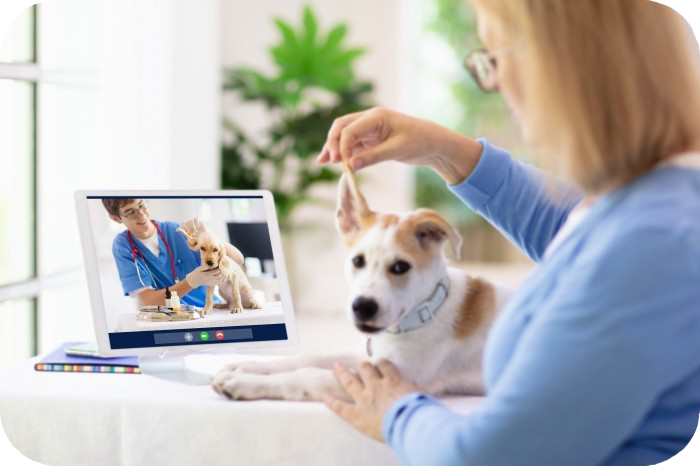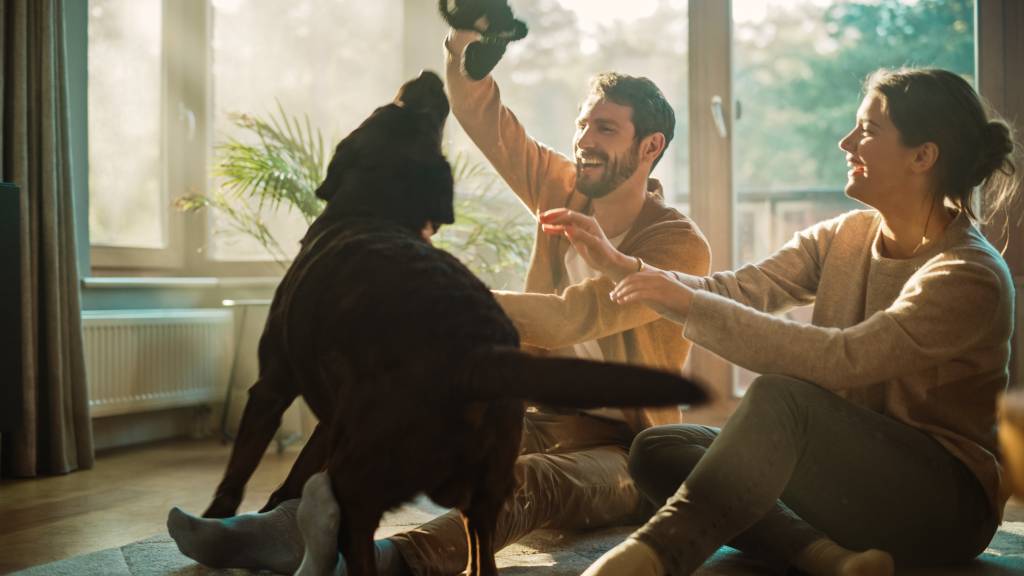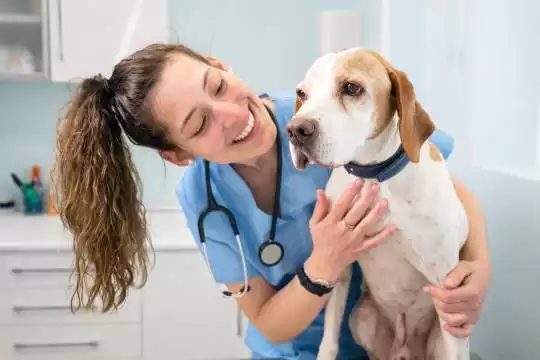Connect with a verified veterinarian in minutes. Licensed vets are available 24/7 to answer your questions. No need to worry about your furry family member.
The moving process can be overwhelming not only to people but to their pets too. Moreover, packing, moving, and getting acquainted with the new living place is a quite stressful experience for our furry friends. In this article, competent specialists from moving company San Mateo will share a few tips on how to make the new house safe and comfortable for your goofy inhabitants and organize the process of getting used to a new living place smooth and painless.
Before the moving day and introducing your little friend to their new home, be sure to prepare the premises by the following requirements:
Avoid rugs and carpets
First of all, avoid laying floor coverings on which hair and bacteria can accumulate. Instead, opt for hardwood floors or textured tile flooring that is easy to clean.
Hide all fragile and precious items high
We all know that pets can turn any object into a toy, so make sure that valuable and fragile items are located at a height inaccessible to little rascals.

Review symptoms, medications & behavior to keep your pets healthy with a Vet Online in just minutes.
Ask a Vet Live NowChoose trash cans with lids
When choosing a trash can, make sure it is strong and durable so that your pet cannot be poisoned by old food, harmful chemicals, and pieces of indigestible objects. To prevent your pet from having access to garbage, provide buckets with tight-fitting lids or keep them in a closed pantry or lockable cabinet.
Think about pet-friendly furniture
Be sure to purchase furniture minimally vulnerable to stains and scratches. Choose materials that are easy to clean and do not absorb odor, such as faux leather or stain-resistant fabric, and avoid light-colored velvets, tweeds, and silks, especially for sofas.
Take away all medications, vitamins, and foods poisonous to pets
Chemicals and medication should also be stored in a place where pets cannot reach. Even seemingly innocuous foods like grapes, chocolate, raisins, nuts, and avocados can be deadly poisonous to pets, so be sure to provide storage areas for these items that your little friend can’t stick their nose into.
If you’d like to organize a real cat- or dog-friendly environment, make sure they have enough space and toys to play with, or they will start damaging furniture, walls, and valuables. Knowing the habits of these animals, before the moving date, it is highly recommended to install:
- Window screens to prevent your pet from accidentally falling out and getting seriously injured.
- Hidden wiring so your fluffy can’t chew it and mess around with electrics.
- Blockades to stop your pet from entering the spaces where their presence is undesirable or dangerous.
- Special stands for indoor plants so that your animal cannot turn them over or break them.
Remember that some pets will definitely look for evacuation routes in the new house. For example, rabbits can gnaw through a wooden floor, and hamsters can crawl through the smallest cracks. To prevent the animal from running away and becoming more stressed, inspect your entire home and block off any potential escape routes.
Tips for Moving with Pets
If you do not have strict deadlines for when to move, you will avoid a lot of hassle by preparing your pet in advance:
- Help a four-legged family member get used to the pet carrier and plan your route beforehand.
- If your moving process will take long, think about taking breaks to ease the journey.
- Stock up on enough drinking water to keep your animal from dehydration.
- If you can choose options, stop on the best way to move to your pet.
- If you are not using your own transport, carefully study the rules that the carrier has set for pets.
- Notify the transport company in advance: you may have to pay an additional fee or reserve your pet’s spot on the plane.
- Do not neglect the help of a moving agency, especially when you are going to move with exotic animals.
- Collect all the necessary documents regarding the health and vaccinations of your pet.
- Learn the rules and regulations that you will need to follow regarding a pet in a new city.
- Get the contacts of a local vet at a new place of residence: you will definitely need their help.
Connect with a verified veterinarian in minutes. Licensed vets are available 24/7 to answer your questions. No need to worry about your furry family member.

Julie
Julie is a graduate of the University of North Carolina, Wilmington, where she studied Animal science. Though contrary to the opinion of her parents she was meant to study pharmacy, but she was in love with animals especially cats. Julie currently works in an animal research institute (NGO) in California and loves spending quality time with her little cat. She has the passion for making research about animals, how they survive, their way of life among others and publishes it. Julie is also happily married with two kids.
Review symptoms, medications & behavior to keep your pets healthy with a Vet Online in just minutes.
Ask a Vet Live Now

